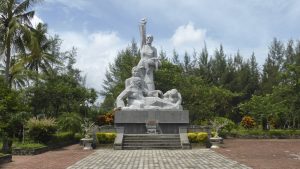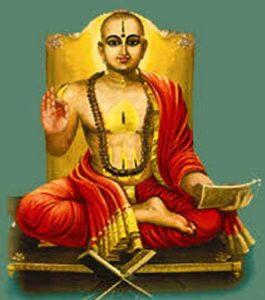Many people know of the Mexican holiday Día de Los Muertos, which is filled with vibrant colors and intricately painted faces. What many people don’t know is that this holiday originated over 3000 years ago with the Aztec empire. The Spanish Conquistadors first recorded a Día de Los Muertos celebration during the 16th century. When the Aztecs had begun this tradition, they weren’t remembering loved ones who passed, but they were worshiping the queen of the underworld and protector of the dead.1

This Aztec queen was Mictecacihuatl, “Lady of the Dead,” Queen of Mictlan.2 According to Aztec legend, Mictecacihuatl was sacrificed as an infant and placed in the underworld to become the wife of Miclantecuhtl, the king of the underworld. In the underworld, her role was to watch over the bones of past lives, which would be used to create new life in the living world. However, in order for the bones to be able to create new life, they needed to be stolen from Mictecacihuatl to be brought to the living world. As their protector, part of her own life would be carried with the stolen bones. Even after the bones were stolen, she would continue her duty to protect them by returning to the living world every year to make sure the bones were being properly taken care of. When the time came for her to return to the living world, the Aztecs celebrated Mictecacihuatl’s return with death festivals and traditional dances, to honor her for her protection of the bones that created life and to seek protection for those who died.3

The Aztecs celebrated Día de Los Muertos much differently than it is celebrated today due to the Spanish conquistadors and Catholicism. The Spanish changed the lives of the indigenous peoples wherever they went, from taking land for the Spanish throne to converting people to Catholicism. Many traditions changed, including those of Día de Los Muertos.4 The Aztecs laid out offerings for the King and Queen of the Underworld for the whole month of August, and the Spanish were the first outsiders to witness this honoring of Mictecacihuatl by the Aztecs. Not long after the Spanish exposure to this festival, the Spanish combined the Aztec tradition with Catholicism. Syncretism, the blending of Spanish and indigenous beliefs and practices, combined the Aztec traditions of Día de Los Muertos with the Spanish traditions of All Saint’s Day and All Souls Day.5 Some examples of syncretism between Catholicism and Día de Los Muertos are the symbols that are most recognizable with Día de Muertos, such as decorated skulls and skeletons, and the Spanish character “La Catrina,” who represents Mictecacihuatl.6 The merging of Catholicism with the Aztec religious beliefs began the evolution of how Día de Los Muertos, transforming how it is celebrated today.

Despite that the name Día de Los Muertos translates to Day of the Dead in English, the holiday is actually the celebration of life. Día de Los Muertos doesn’t focus on death and mourning of a loved one. It’s seen as a happy celebration where family members of all generations, deceased and alive, can be together as one. The traditions of this holiday have changed from honoring the queen of the underworld Mictecacihuatl to honoring those who have passed.7 It’s a time of colorful festivals and parades, beautifully painted colorful skulls, marigold flowers, decorated ofrendas, grave site visits and the smells of traditional Mexican foods and incense in the air. Although it is primarily celebrated in Mexico, some parts of the United States, especially cities and towns on the Mexican border, have adopted the tradition and celebrate the remembrance of their deceased loved ones.
- MasterFILE Complete, 2008, s.v. “Día de los Muertos, by Benjamin Perea. ↵
- Sin Jones, Mictecacihuatl, Santa Muerte, 2010, 1-16. ↵
- Sin Jones, Mictecacihuatl, Santa Muerte, 2010, 1-16. ↵
- Mark Lacy, Origins of El Día de Los Muertos: The Prehispanic Festival of the Dead Defies Cultural Invasions of Mexico, (History Institute for Culture), 1. ↵
- Mark Lacy, Origins of El Día de Los Muertos: The Prehispanic Festival of the Dead Defies Cultural Invasions of Mexico, (History Institute for Culture), 1. ↵
- Mark Lacy, Origins of El Día de Los Muertos: The Prehispanic Festival of the Dead Defies Cultural Invasions of Mexico, (History Institute for Culture), 1. ↵
- Christina Zarate, Día de Los Muertos, (Smithsonian National Museum of American History), 2-7. ↵



114 comments
TB
The Aztec empire did not exist 3000 years ago as the first sentence in this article claims. Perhaps other Mesoamerican cultures had similar celebrations 3000 years ago, but the Aztecs appeared less than 1000 years ago. An academic article needs to get that information right.
Maria Ferrer
This is a very interesting article to read. I didn’t know that “Dia de Los Muertos” was different from how it is celebrated today due to the Spanish conquistadors and Catholicism. I love how at the end of the article the author describes how and why Mexicans celebrate “Dia de Los Muertos,” and I think it is a very beautiful celebration because, as the author said: “members of all generations, deceased and alive, can be together as one.”
Daniela Iniguez-Jaco
Woah such an interesting article! I honestly had no idea that the Aztecs started this, let alone that the tradition was very different than what it is now. I had no idea it was the Spanish who changed everything and that catholicism also changed that tradition. I mean I’m not surprised because some Catholics hate it when others believe in different beliefs and they want everyone to worship their god.
Miri Naifeh
If the Spanish had not mixed Catholic beliefs with this practice would the Aztec human sacrifice continue? The Aztecs were well known and documented as sacrificing humans to their gods. The Spanish probably were horrified when they observed the Aztecs practicing human sacrificing – I’m sure a few Spaniards were led to the top of the sacrificial altar. This observance is darkness and the real god is Satan who is being worshiped. “And no wonder! For Satan himself transforms himself into an angel of light.” 2 Corinthians 11:14
Paula Salinas Gonzalez
El Dia de los Muertos is very important to our culture and it is definitely a tradition worthy enough to pass down to the next generations. Even though I am from Mexico, I hadn’t heard of how the tradition started or how it adapted to Catholicism. The only thing I knew is that it is a day to remember the dead.
Vivian Urrutia
The most impacting fact of this article was how El Dia de Los Muertos is involved with Catholicism. My whole life I believed this Mexican celebration was an act of some kind of evil. This article opened my eyes so much, now I understand people that celebrate this day are trying to commemorate their beloved ones that passed away. Spanish people nowadays have changed this holiday a lot and it has become an enormous celebration especially in Mexico.
Eric Hernandez
This article was very interesting and has really opened my eyes to the history of Dia de Los Muertos. Before reading this, I thought Dia de Los Muertos was only celebrated by the Spanish culture. This article showed me that this holiday was started by the Aztecs and how differently it was celebrated compared to the little changes that the Spanish have made.
Diego Oviedo
This article was very interesting. I did not fully know the origins of the Dia De Los Muertos, but reading about it made me realize that it is more than what I had learned about and celebrated. I found it interesting that the king of the underworld had a wife that would watch over the bones of the dead. I also found it interesting that in order to make life again the bones had to be stolen…. I also didn’t know that the Spaniard’s mixed the day with Catholicism. Over all, this article was very interesting and I enjoyed reading about it.
shasid V
Dia de los muertos is a holiday that i’ve celebrated every year since i was little. Dia de los muertos is something beautiful because it not sad and boring is more of joy and happy memories.
Alyssa Vasquez
My family and I have never really celebrated Dia de Los Muertos but I do know about it and believe in it. I like how people don’t see death as this horrible depressing thing but this day we celebrate it and believe all of our ancestors are here with us. I’ve seen many movies and shows that talk about it and it’s nice to see how this day is portrayed in so many ways.